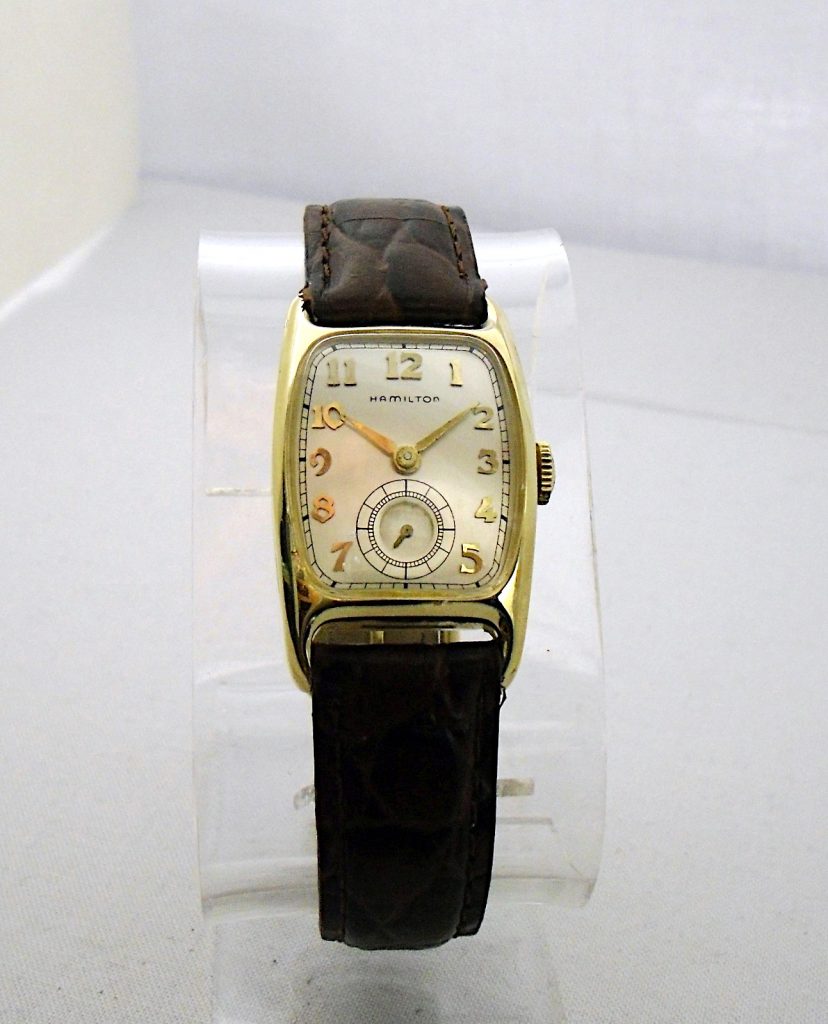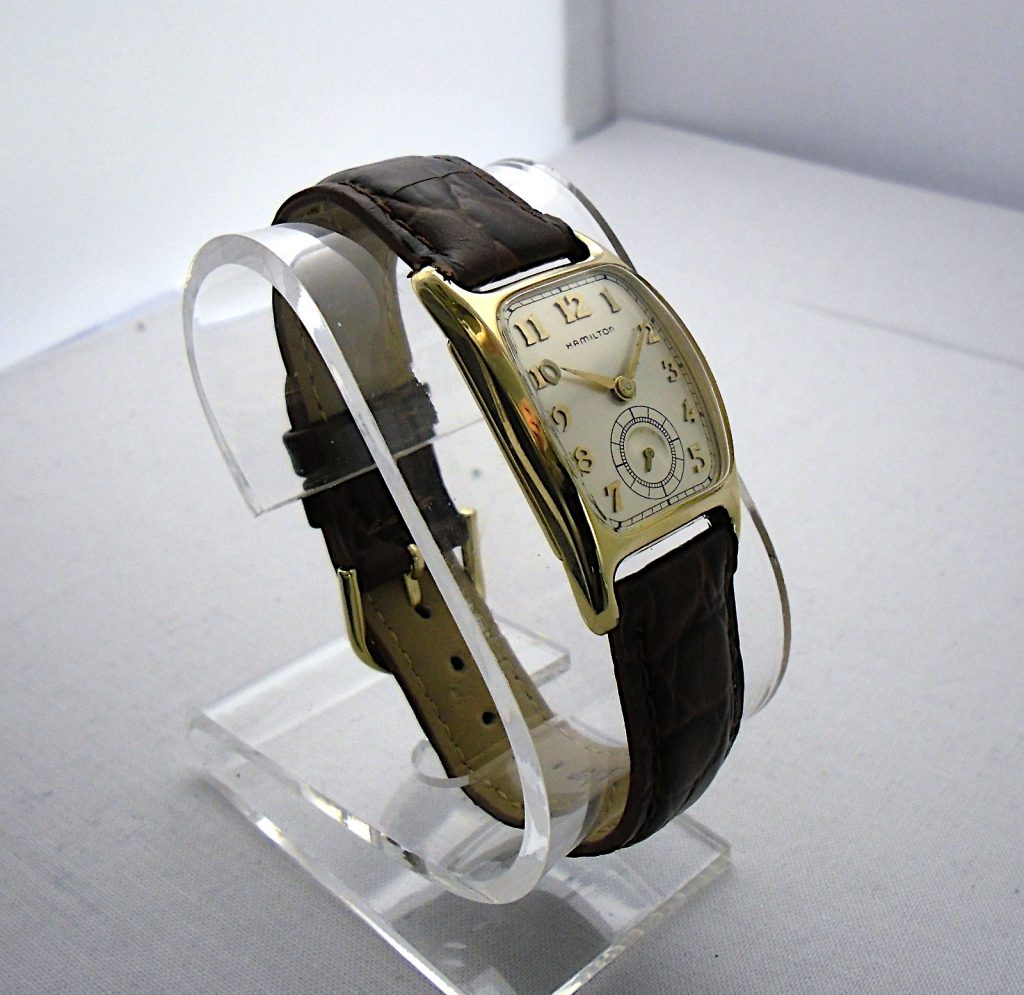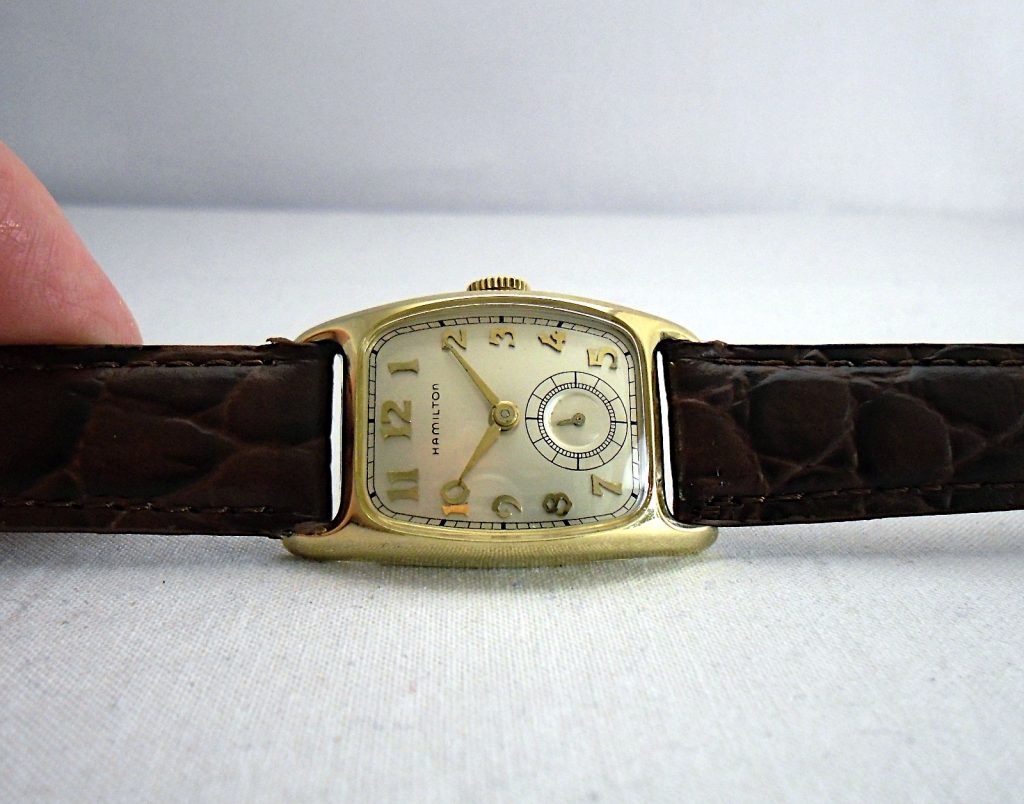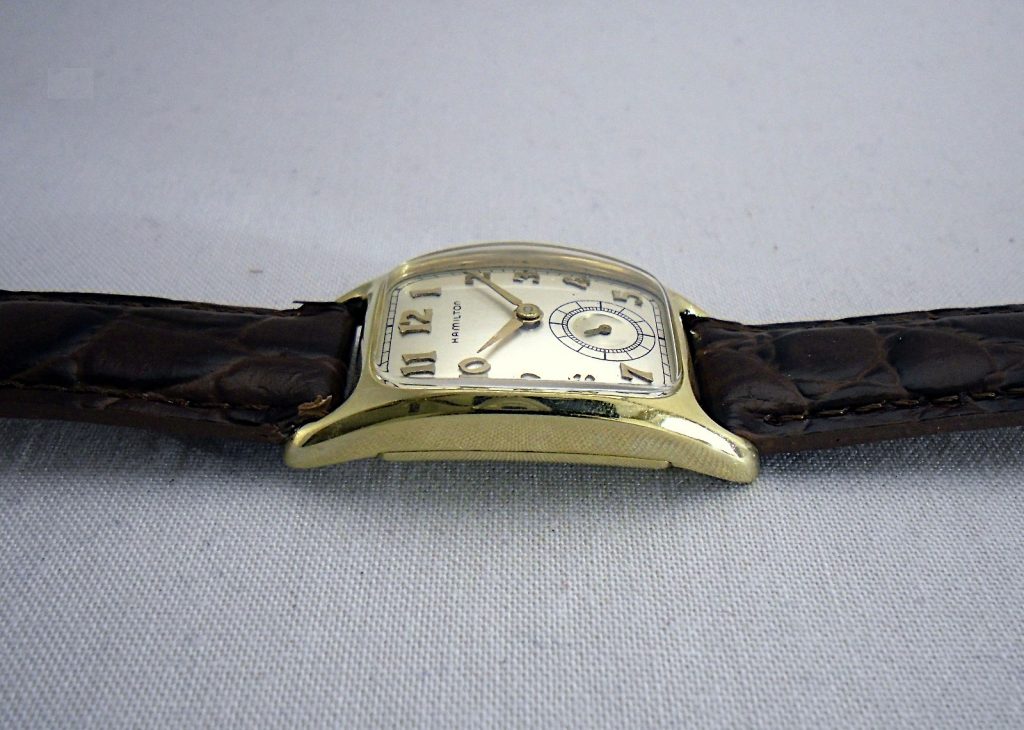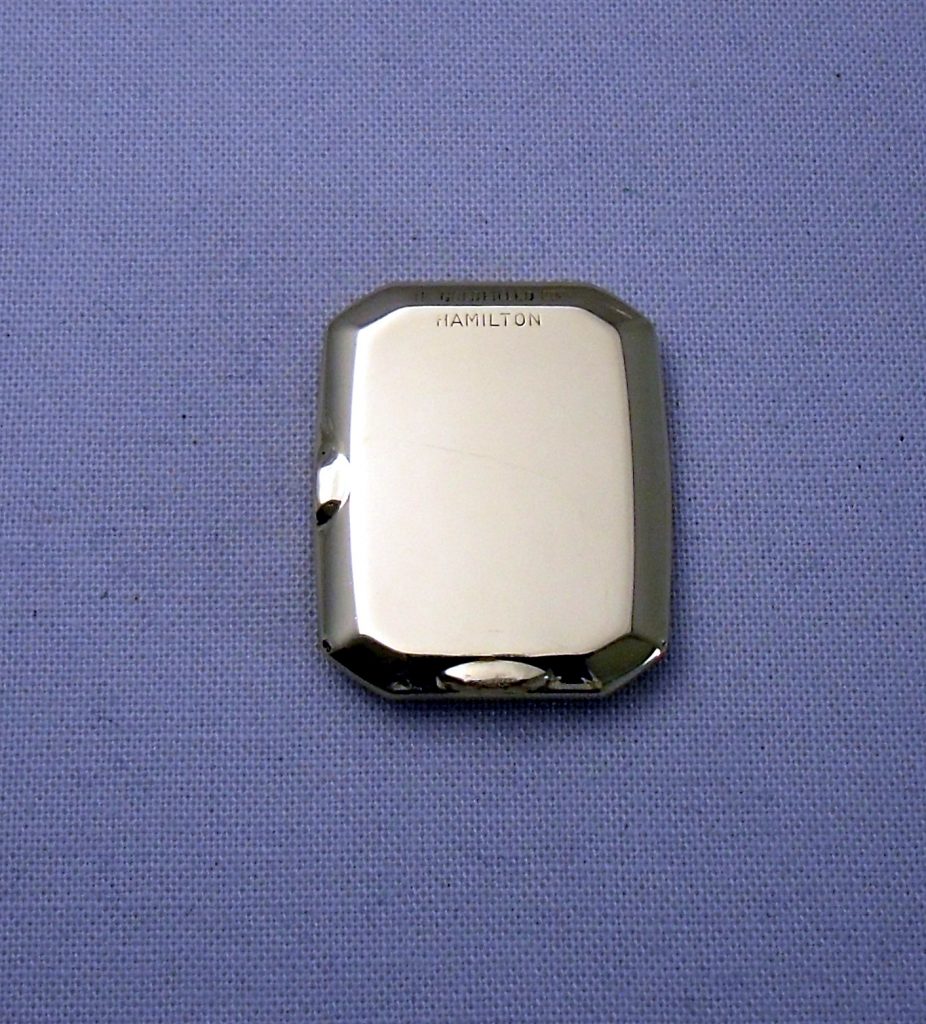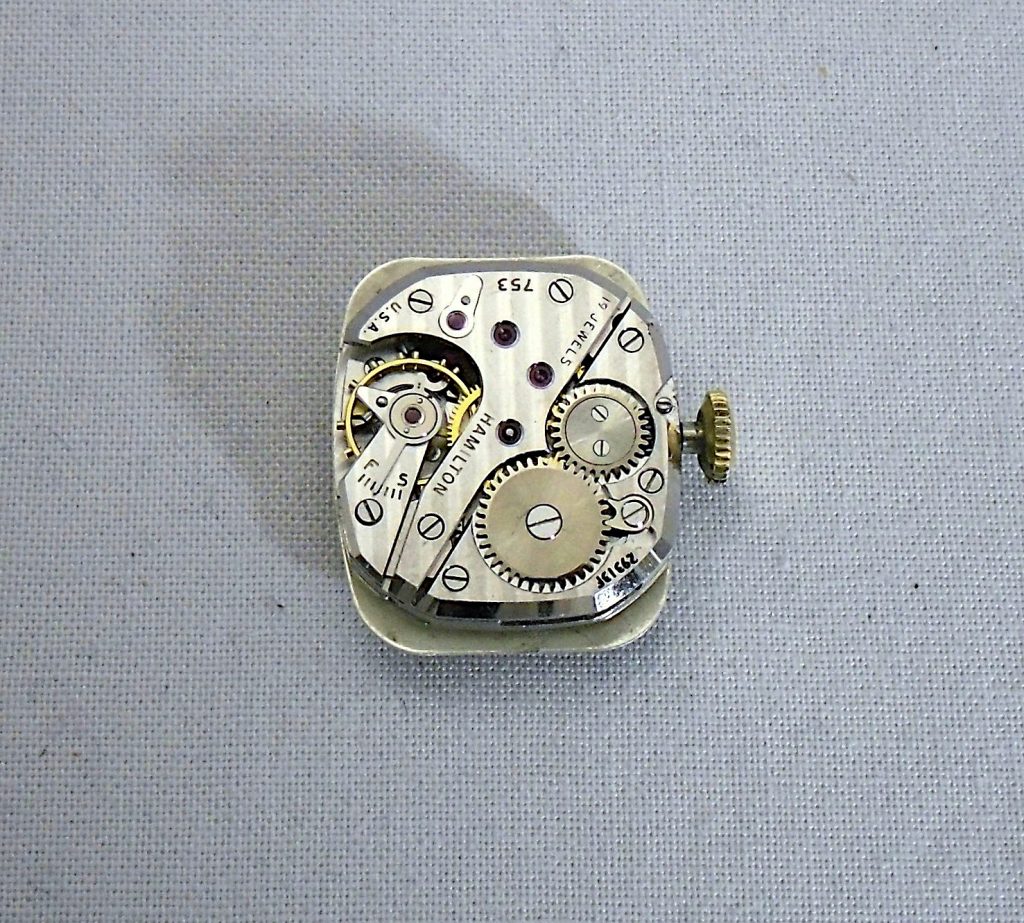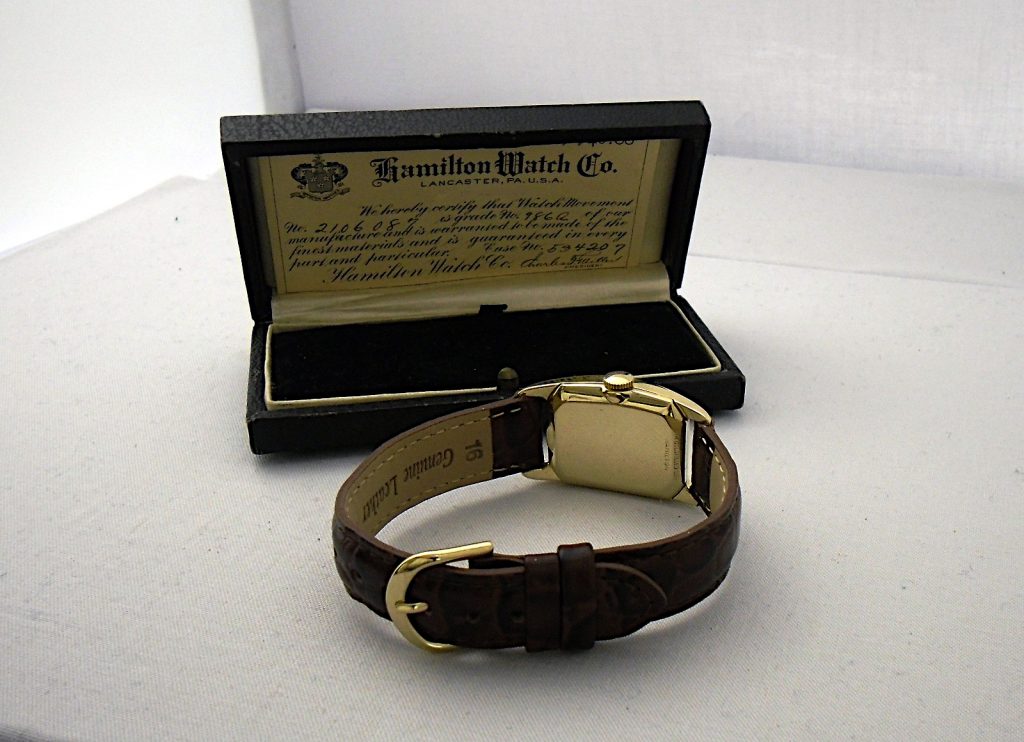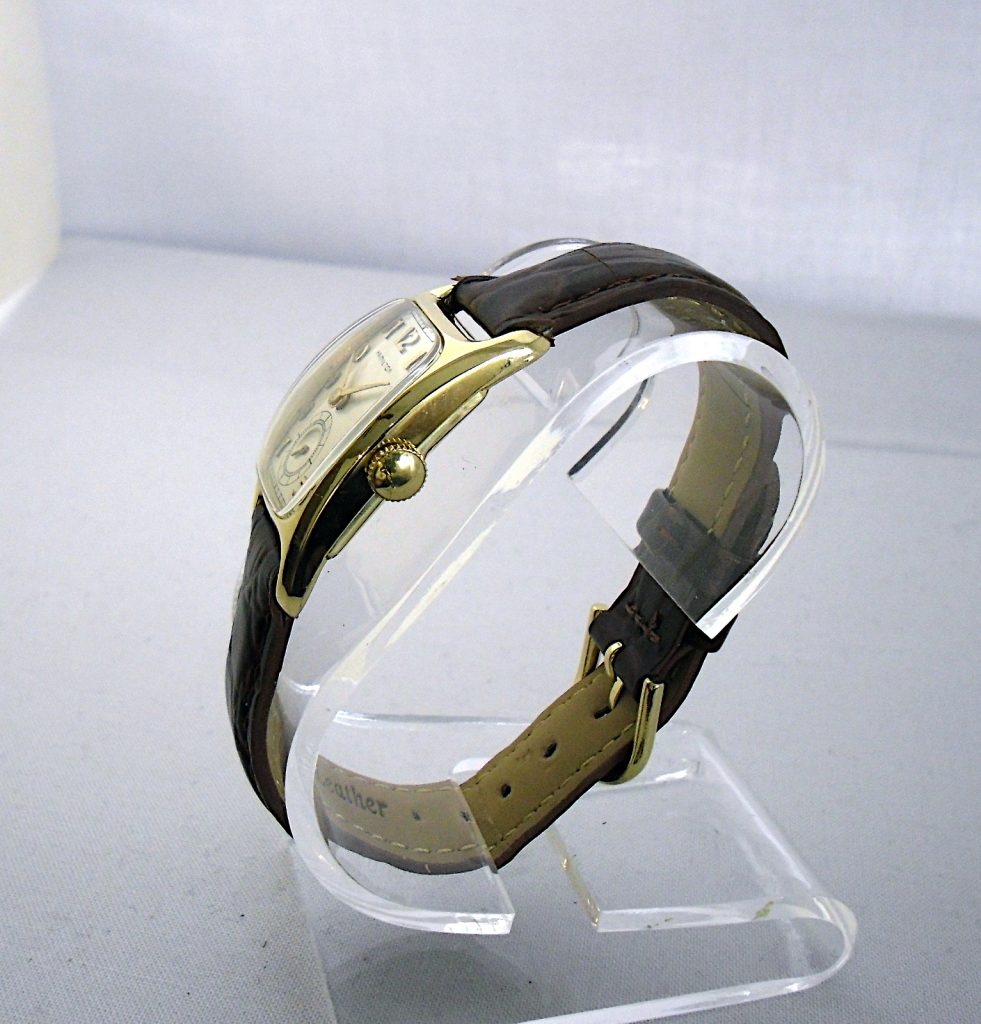According to the current Hamilton Watch Company (relocated to Biel, Switzerland in 2003), the Boulton remains the most popular model the company ever created and possibly the most popular men’s wristwatch design in history. The company issued the first Boulton in 1940 in a 14K gold filled case. It used 18K applied (detachable) gold numerals and hands and the famous stellar 982 movement.
All Boulton models have a recessed subsidiary seconds dial located just above the 6 O’clock position. The cases typically measure 39 mm x 23 mm. The modern versions with quartz ETA movements might differ slightly in size.
As I began collecting Boulton models, I found some differences or variations in what Hamilton issued. The first model came out in 1940. Those seem quite rare.
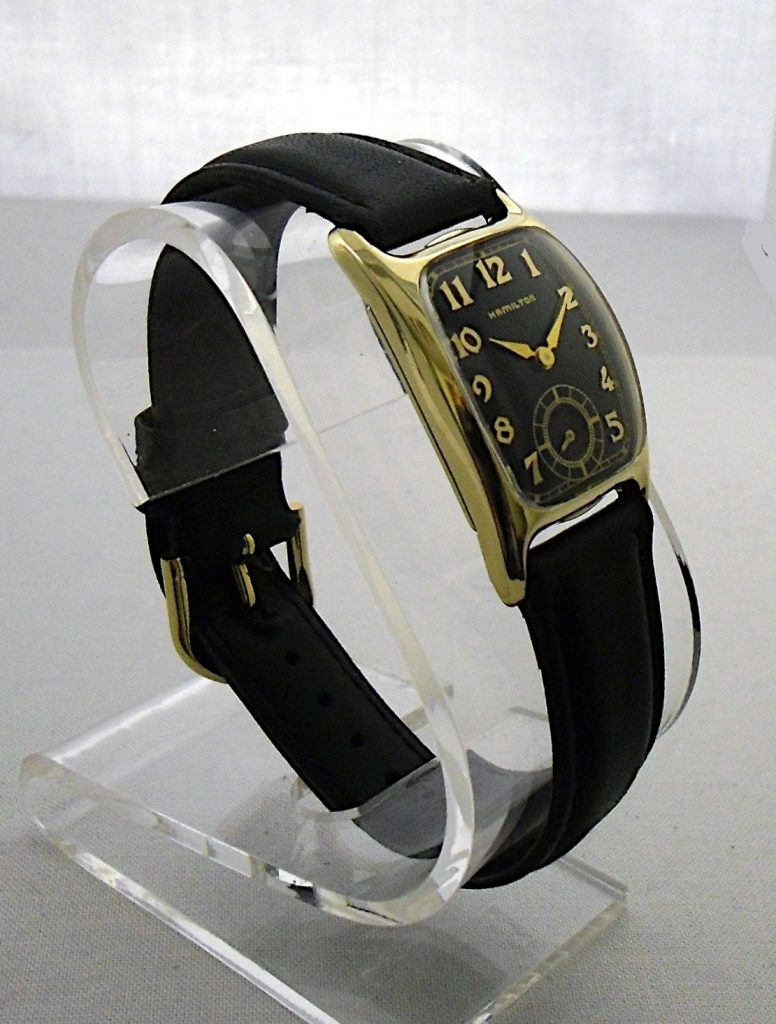
The catalogs showed a watch with an oyster colored dial, also known as a Butler finish. I looked for those, but discovered that jewelers had the ability to offer custom dials and had since the advent of the pocket watch. Also, Hamilton sold dials separately and if you had a first edition Boulton, you could buy a new dial from a jeweler and the next owner would never know the difference.
Hamilton re-issued the Boulton in 1946 and it appeared identical to the first one. How could one determine if a seller had a 1940 or 1946 edition? Well, if you look inside and see the word “Boulton” written inside the movement holder, Hamilton made it between 1946 and 1951. If it didn’t have the word Boulton on the inside of the cover and had a 982 movement, then the seller had a first edition.

Boulton dials had a silver-oyster color also known as a Butler finish. However, I came to understand that jewelers could sell custom dials.
After World War II, people wanted Boulton wristwatches, especially after the soldiers came back from the War with army, air force and marine issued Hamilton steel cased watches. Americans had money to spend and Hamilton became quite famous because they furnished the Allies and especially the US military with watches.
Something happened in 1952
To keep up with competitors like Gruen and Bulova, Hamilton began issuing new designs. After the war, the company leaned heavily on their 1939 catalog and offered legacy models, but those Art Deco models began to loose their appeal as the new mid-century styles emerged.
Even so, the public still clamored for the Boulton and its solid gold cousin known as the Donald. Hamilton decided to continue offering the Boulton, but it had to change the interior of the case to accommodate a different movement.
The 1952 Boulton looked identical on the outside to the earlier models, but it had a newer movement. It continued to offer a 19 Jewel model, but the company went with a size 12/0 format instead of the 14/0. Few consumers would ever know the difference. Hamilton offered the 1952 model as a Boulton B and continued making it through the 1954 model year.
Hamilton only produced a limited number of the Boulton B from 1952 to 1954. By 1955, the company discontinued offering the Boulton until 1960, when it came out with the Boulton II.
You will not find many Boulton B models in the world. Every few years, I find one in an estate. But, I only see one or two in mint condition in a generation or so.
In my opinion, the most collectible Boulton models include the 1940, 1952 and 1982 releases. I feel a little hesitant to recommend the 1982 retro model because it uses a Swiss Unitas lady’s movement instead of a Hamilton movement. I have never found a source of parts for the Unitas movement. Good luck if something goes wrong with the 1982 model.
At the time of this writing, I can still find parts for the 753. While Hamilton only made that movement from 1952 to 1954, it’s the same basic caliber as the 754. Also, you can use the 770 as a drop-in replacement. You can find lots of 770’s out in the wild.
What are the specs for a Boulton B? Look below:
Product Year: 1952-1954
Movement: 753 19 Jewel manual winding
Size: Case; width 23 mm (excluding crown), length 37 mm, lug width 16 mm.
Dial color: Oyster grey known as a Butler finish
Material: Case; 14K gold filled (14K GF)
Crystal: Glass
Water resistant: Not water resistant
Country of manufacture: USA

